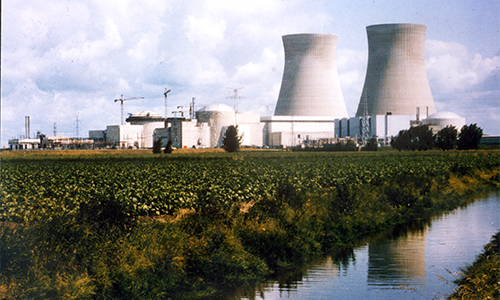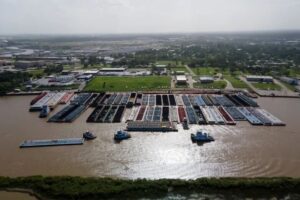You’ve heard of Chernobyl, Three Mile Island and Fukushima. But beyond that, nuclear energy is probably a mystery of smoke plumes and yellow radiation signs.
It’s okay if hearing “uranium nuclear fission” makes your mind zone out. But you should still know about the nuclear energy industry. After all, it provides a fifth of the nation’s energy.
In this quick crash course we’ll go over the country’s dependence on nuclear, the industry’s employment levels and even take a glimpse into the future.
What is nuclear energy?
At nuclear power plants, uranium atoms are forcibly split apart inside a reactor in a process called fission, the lobbying group Nuclear Energy Institute (NEI) explains. That process is a hot one, understandably. The steam it creates is used to spin turbines, which generates electricity.
A pencil eraser-sized uranium fuel pellet contains the same amount of energy as 17,000 cubic feet of natural gas, 1,780 pounds of coal or 149 gallons of oil, according to NEI.
The U.S. Energy Information Association lists 99 operating reactors at 61 power plants across the U.S., the most being housed in Illinois.
Is nuclear a renewable source of energy?
No, nuclear energy is not renewable. Renewable energy comes from inexhaustible sources that naturally replenish over time, such as the sun, wind and water. Nuclear, on the other hand, comes from uranium, which is mined. It is sustainable, though, as uranium is plentiful enough that scientists don’t expect it to run out anytime soon. Not even remotely soon.
Nuclear power plants do not emit carbon dioxide, nitrogen oxides or sulfur dioxide during the production of electricity. They do create nuclear waste.
How much does the U.S. depend on nuclear?
Quite a bit.
Although nuclear represents only 9 percent of the energy the U.S. is capable of producing from all sources, it is used very effectively. Since 1990, nuclear energy has consistently provided roughly 20 percent of the nation’s generated energy, according to the EIA.
On another note, nuclear power plants typically pay about $16 million in state and local taxes, as well as $67 million annually in federal taxes, according to NEI.
How many people does the nuclear energy industry employ?
The nuclear industry employs more than 100,000 people, according to NEI. Plants tend to be in rural locations, offering salaries that are on average about 36 percent higher than the average in surrounding communities. A typical plant may employee 400-700 people. With expected retirements on the horizon, the industry will likely hire 20,000 people in the next five years.
Regulation?
The nuclear industry is regulated by the U.S. Nuclear Regulatory Commission.
So what’s the future of this?
To maintain its 20 percent share of the matrix, the nuclear energy industry would need to build 20 to 25 new reactors by 2040, according to NEI. Presently, 11 reactors are going through studying, licensing or building in the U.S. The processes of licensing and construction combined take about nine years.











